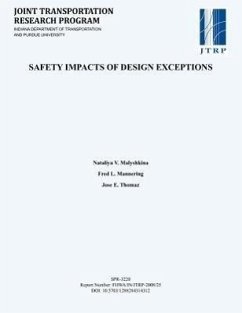
Mitigating the Expansive Behavior of Chemically Treated Soils
Versandkostenfrei!
Versandfertig in über 4 Wochen
17,99 €
inkl. MwSt.

PAYBACK Punkte
9 °P sammeln!
Sulfate-induced heave, resulting from the chemical treatment of sulfate rich soils, has been known to cause significant damage to pavements and other structures particularly in the south-western United States. This research addressed the problem of sulfate-induced heave in coal mine spoils, formed as a result of shallow strip coal mining, after treatment with calcium-based stabilizers. These spoils occur in areas of Indiana in which substantial infrastructure development is taking place and will continue to occur in the next 10-15 years. Samples of coal mine spoils were obtained from different...
Sulfate-induced heave, resulting from the chemical treatment of sulfate rich soils, has been known to cause significant damage to pavements and other structures particularly in the south-western United States. This research addressed the problem of sulfate-induced heave in coal mine spoils, formed as a result of shallow strip coal mining, after treatment with calcium-based stabilizers. These spoils occur in areas of Indiana in which substantial infrastructure development is taking place and will continue to occur in the next 10-15 years. Samples of coal mine spoils were obtained from different sites in Indiana. While the majority of the samples exhibited sulfate contents below values generally considered to be a concern, selected samples exhibited elevated sulfate contents, in the thousands of ppm. One of these samples, from the Hawthorn coal mine area in Sullivan County, Indiana, with sulfate content exceed 10,000 ppm, the critical threshold value above which, according to the literature, significant heave may be expected, was selected for extensive testing.












